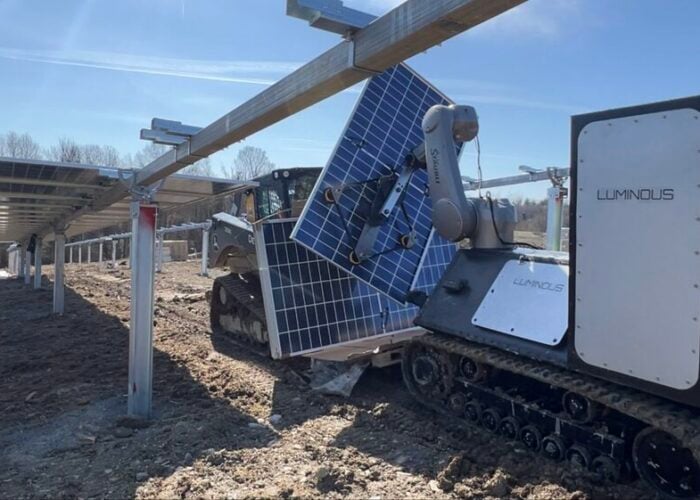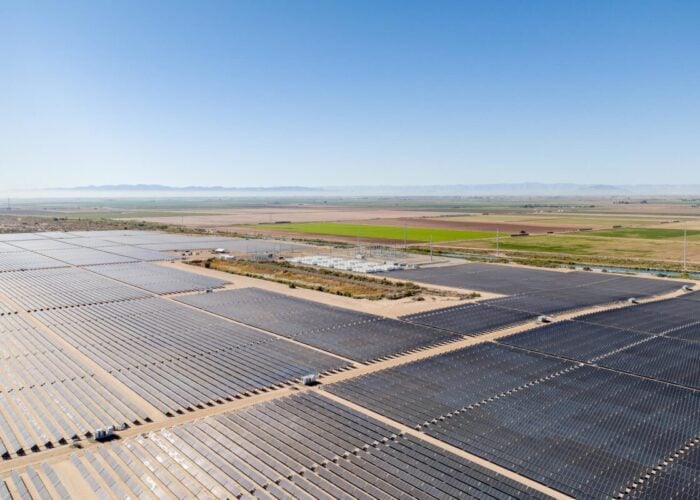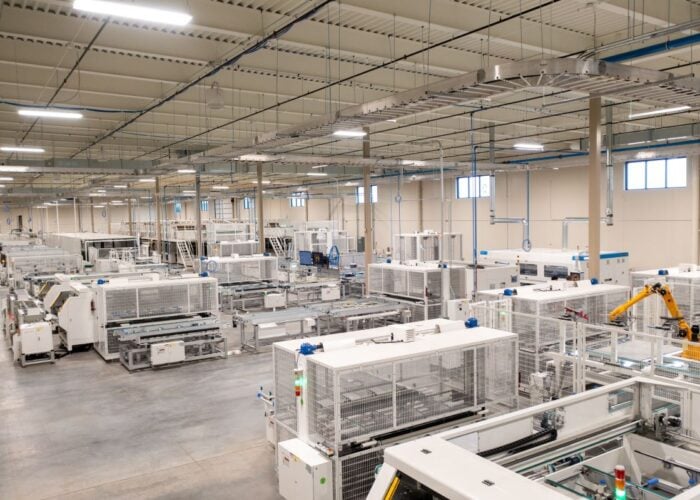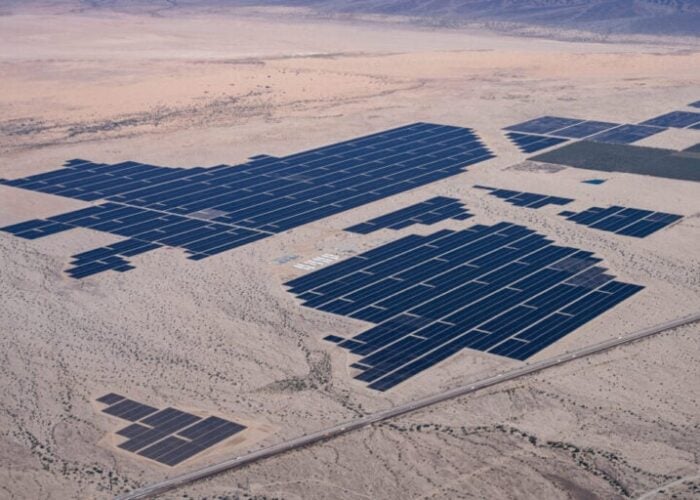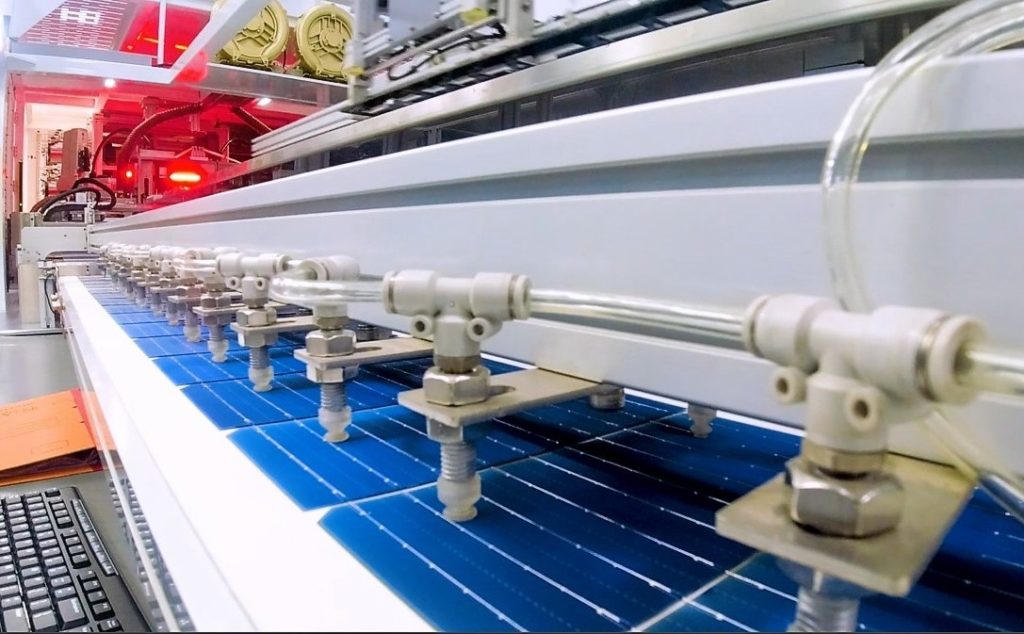
Many countries around the world have tried to create a domestic solar manufacturing sector over the past decades, although success stories have been rare. This is a consequence of China’s ongoing dominance of the supply chain, including the production of polysilicon, wafers, cells, and modules.
By 2032, China’s production capacity of polysilicon, wafers, cells and modules will be able to meet annual global demand, according to Wood Mackenzie. By that year, the annual global installation capacity will reach 359GW, but China’s polysilicon and wafer production capacity will be as high as 1,012GW and 873GW respectively. Moreover, China’s cell and module production capacity in 2032 will reach 1,059GW and 1,012GW respectively.
Unlock unlimited access for 12 whole months of distinctive global analysis
Photovoltaics International is now included.
- Regular insight and analysis of the industry’s biggest developments
- In-depth interviews with the industry’s leading figures
- Unlimited digital access to the PV Tech Power journal catalogue
- Unlimited digital access to the Photovoltaics International journal catalogue
- Access to more than 1,000 technical papers
- Discounts on Solar Media’s portfolio of events, in-person and virtual
However, in recent years, geopolitically driven import or export regulations targeting China and certain Southeast Asian countries have created conditions to realise a global PV manufacturing ecosystem. Energy security and component manufacturing locations are under the spotlight, while the issue of PV traceability has risen to the top of the procurement agenda.
In the webinar Global PV manufacturing revival: key players beyond China in the terawatt era?, PV Tech’s head of research Finlay Colville and Rahul Bhutiani, global chief marketing officer of Indian manufacturer Adani Solar, explored the 20-year history of solar PV manufacturing, Adani’s plan to augment production capacity and exports of solar modules from Indian manufacturers.
Colville began the webinar by examining the current status of cell production. As of the end of 2023, global cell production capacity surpassed 1TW although the actual cell production was only over 0.5TW. However, cell production is likely to rise in the upcoming years and could reach about 750GW by the end of 2024. Colville added that 2026 should be the first year of more than 1TWp-dc cell production “unless something major and unforeseeable happens”.
Regarding technology, p-type cells have dominated over the past decade, but n-type cells already accounted for about 40% of production in 2023. N-type cells will account for the majority of cells produced globally starting from 2024.
The webinar also examined the manufacturing of polysilicon, wafers, cells and modules in different countries or regions excluding China. Currently, outside China only Southeast Asia boasts manufacturing capacity across the supply chain, from polysilicon to modules. Europe produces polysilicon now but has minimal activities in manufacturing wafers, cells and modules.
The US now produces polysilicon and modules but has minimal activities in manufacturing wafers and cells.
In the near future, India, Southeast Asia, and the US will have the capacity to manufacture polysilicon, wafers, cells and modules. Europe also has the capacity to manufacture polysilicon, cells and modules, but may only have minimal wafer manufacturing activities.
Module supply to the US
The speakers then moved on to discussing module supply to the US. During 2023, modules assembled in Southeast Asia accounted for about 70% of all solar PV modules landing in the US. Domestic supply in the US, along with imports from India, accounted for over 25% last year.
US-manufactured modules accounted for about 15%, with some two-thirds of these made domestically by First Solar.
However, regarding company ownership, Chinese-owned companies supplied just over half of the modules consumed in US downstream channels in 2023, with suppliers headquartered in India, South Korea and Japan making up the lion’s share of other imports from overseas-headquartered companies.
India has been the big winner in terms of market-share gains over the past years. The massive uptick in Indian module imports to the US in the past few years – particularly 2023 – was partly due to the excess product availability from Indian module suppliers but also due to the desire of US module buyers to have non-China and non-Southeast Asia module supplier options.
India’s political relationship with the US is also likely to have played a key part in the increase in exporting modules to the US. More details on the supply of modules to the US can be read in Colville’s article recently published on PV Tech.
Adani’s role in solar manufacturing
Bhutiani said Adani will invest over US$20 billion in renewables generation over the next decade. Previously, PV Tech reported that Adani raised US$394 million to build a 10GW solar manufacturing plant through its renewable energy subsidiary Adani New Industries. The facility will form part of an integrated green hydrogen ecosystem, which will include wind turbine manufacturing as well.
Adani also claims that its solar PV manufacturing arm Adani Solar is India’s largest vertically integrated solar company with a manufacturing capacity of 4GW.
Indian solar manufacturers have increased their production capacity in recent years. Before the end of the webinar, Bhutiani answered a question from the audience about the destination of Indian-made modules from newly added manufacturing facilities.
Bhutiani said half of the modules were used in the Indian market, while another half was exported to overseas markets. “As modules could take 45 days to 60 days to be shipped to overseas markets, solar manufacturers will have a working capital cycle that will get blocked for up to 90 days. Unless a company is prepared for this, exporting modules to overseas markets is not an option that many Indian solar companies would look at.”
Colville added: “On one hand, Indian manufacturers do not want to ship everything overseas because they want to stay friends with the Indian government as it provides incentives. However exporting products to the US can show Indian manufacturers’ competence in high-tech manufacturing, which is the ultimate goal of manufacturers.”
Looking ahead, Bhutiani says Adani will export between 4GW and 5GW of products when reaching their manufacturing capacity of 10GW. “We’ll sell 3GW in the Indian market, and 2GW or 3GW will be used for captive consumption [by Adani],” he concluded.


